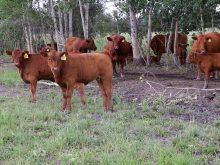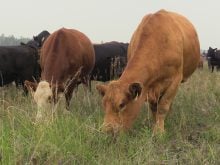Does a liquid feeding system sound like a dream come true?
Like it or not, a liquid feeding system will have an effect on your dreams, said a University of Guelph researcher.
“A belt will break, a line will get plugged, you will get a call in the middle of the night that you need to fix the system,” said Kees DeLange in an interview during the Western Nutrition Conference in Winnipeg.
“It’s susceptible to breakdowns.”
Liquid feeding systems have begun appearing in the North American hog industry. They have been common in Europe for decades, but in Ontario, the first systems were set up about 20 years ago.
Read Also

Feeder market continues the climb
For the week ending Aug. 30, Western Canadian feeder cattle markets traded $4-8 per hundredweight higher on average.
DeLange said the systems can operate well and, depending on the feed, offer feeding advantages, but no producer should install one without thinking about it.
Pushing liquid feed through a complex system is trickier than relying on dry feeding. Not only can the mechanics break down, but the computerized management systems can suffer software problems.
Farmers need to be willing to stay on top of both the mechanical and computer operations.
“It requires a different attitude,” said DeLange.
Different feedstuffs behave differently in liquid feeding systems, he said. Wheat and barley rations tend to flow well, but farmers often disparagingly refer to liquid corn feed as “corncrete” because of the way it moves.
The first liquid feeding systems in Ontario were set up by recent European immigrants, and they tended to become regional distributors of the technology. Now that there are more than 100 liquid feeding systems in a geographically concentrated area, Ontario farmers can easily manage their systems or find help.
But it might be a different matter on the Prairies.
“You need to have a certain critical mass to get it developed,” DeLange said.
“If you’re stuck out in western Manitoba and your equipment dealer is in central Manitoba, you have a problem.”















